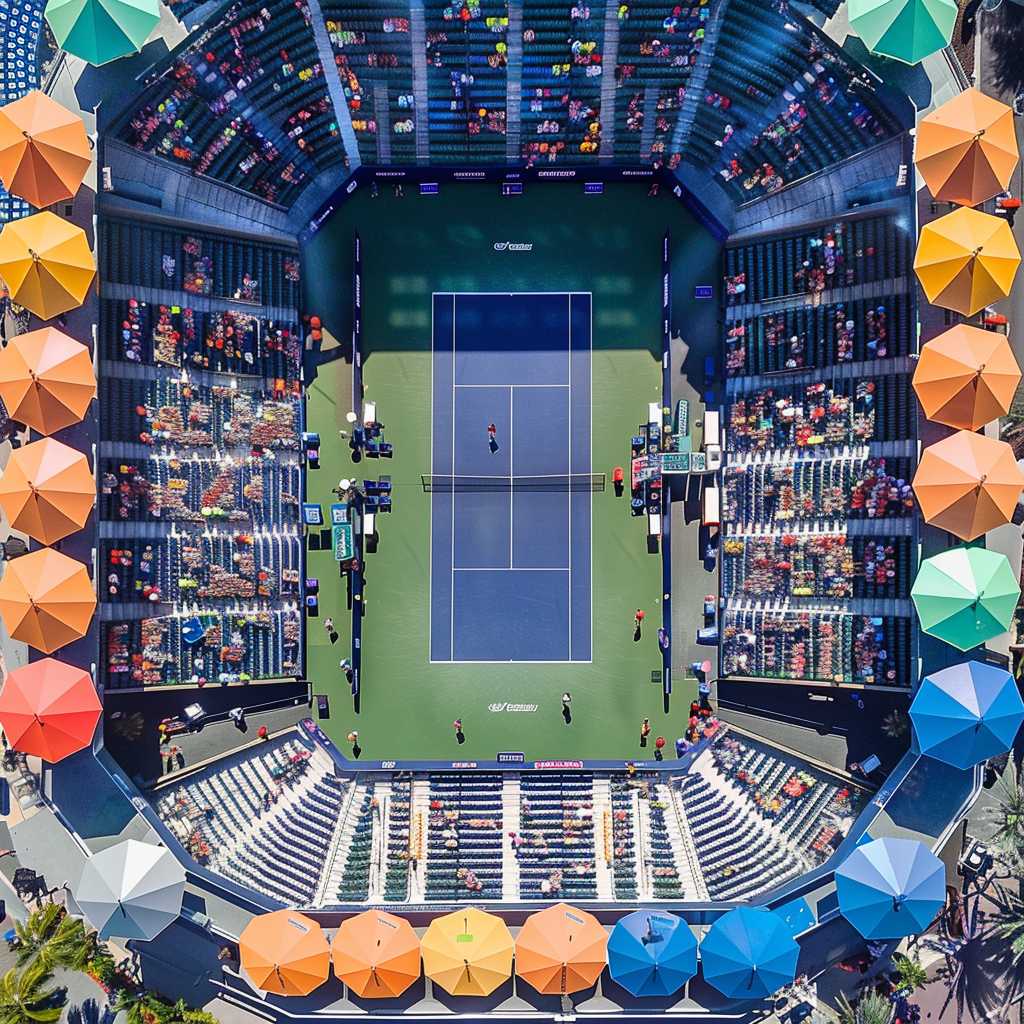Miami Open: A Premier Tennis Event Highlighting International Talent and Culture
The Miami Open, officially known as the Miami Open presented by Itaú, is a world-class event that shines on the global sports calendar. This prestigious tennis tournament brings together top players from around the world to compete in a spectacle of skill and endurance. Set against the stunning backdrop of Miami, Florida, the event offers more than just sporting excellence; it encapsulates a vibrant cultural experience shared by enthusiasts and athletes alike.
Inception and Evolution of the Miami Open
The history of the Miami Open begins in 1985 when it was introduced as part of the Grand Prix tennis circuit. Initially known as the Lipton International Players Championships, it has undergone several name changes due to sponsorship deals over the years, representing growth not only in branding but also in prestige.
With the vision of becoming one of the most significant tennis tournaments following the four grand slams, the Miami Open quickly positioned itself as a key event in both the ATP and WTA Tours. Throughout the years, it has evolved into a festival of tennis, consistently drawing massive crowds and television coverage across the globe.
Location and Venue Insights
The event currently takes place at Hard Rock Stadium, home to the NFL’s Miami Dolphins, located in Miami Gardens. This multifunctional stadium stands out for its ability to transition from a football venue to a fully operational tennis complex. The modernization of facilities and various improvements have enhanced the overall spectator experience, arguably making it one of the most impressive venues in tennis.
Prior to 2019, the tournament was held at the Crandon Park Tennis Center in Key Biscayne – a location that provided an iconic setting for more than 30 years. However, embracing change and seeking growth, organizers relocated to Hard Rock Stadium to offer increased seating capacity, upgraded amenities, and better accessibility.
Combating Weather Elements
Playing largely on outdoor courts in South Florida brings unique challenges primarily because of weather. The subtropical climate can invoke intense heat and sporadic rain which has, on countless occasions, led to significant delays in play. To mitigate these interruptions, innovative roofing and stadium designs now allow spectators and players some respite from mother nature’s unpredictability while upholding fair competition.
Tournament Format
The format of the Miami Open follows conventional ATP and WTA structures for Masters 1000 (for men) and Premier Mandatory (for women) events respectively. The entries for both draws consist of 96 players, offering some athletes direct entry based on rankings while others must qualify through pre-tournament matches.
Matches stretch over two weeks with single-elimination rounds deciding who advances towards finals weekend. The mixed draw featuring both men’s and women’s matches throughout each day brings a unique flavor to mid-week matches – combining high-intensity sporting events with social festivities appreciated by streams of visitors.
Impactful Athletes
Throughout its history, astonishing performances have graced Miami’s courts. Legends like Andre Agassi, Serena Williams, Roger Federer, Martina Hingis, and Novak Djokovic are synonymous with triumph at this esteemed event. Their victories on these hardcourts have not only secured their places in history books but also enhanced their status as household names.
Up-and-coming talents see this arena as one that can potentially carve their path to tennis stardom. The international tone set by participating phenoms from different countries amplifies the global appreciation for tennis which is beautifully captured on this grand stage each year.
Cultural and Economic Impact
Those who dwell beyond the world of tennis often appreciate the Miami Open for its impact on local culture and economy. Drawing tens of thousands of spectators annually, this event significantly benefits tourism sector businesses such as hotels, restaurants, and entertainment facilities in Miami. Furthermore, cultural showcases accompanying tournament activities illuminate parts of the cosmopolitan nature inherent to Miami – from art installations to music events.
Notes
*Image Description:*
An aerial view of Hard Rock Stadium located in Miami Gardens during the Miami Open, showcasing bustling crowds on stadium courts with adjacent practice areas occupied by athletes gearing up for their matches. Brightly colored umbrellas shelter spectators throughout outdoor seating areas capturing an ambiance of competitive spirit mingled with leisure under the Florida sun.
